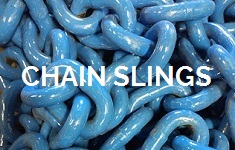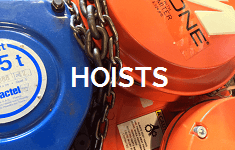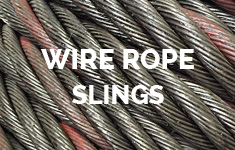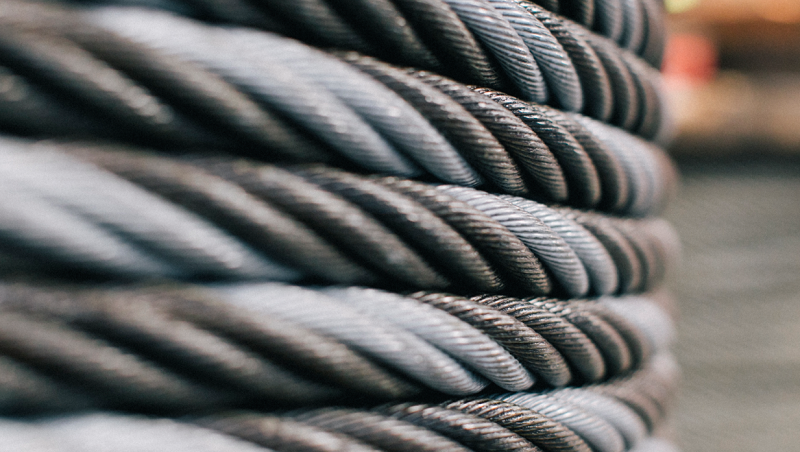What is a wire rope? – The History of Wire Ropes Explained
Wire rope features lots of metal wire strands twisted into the shape of a helix. In certain cases, the term “cable” can be used in place of “wire rope”. However, there are cases whereby “wire rope” is used to qualifiers wires of diameter over 3/8 inch (9.52 mm). Smaller sizes are known as cable or cords. In the past, wrought iron wires were used to manufacture wire ropes. Today, steel is the main material.
Wire rope was made from wrought iron chains, which is known to fail mechanically. Flaws in the chain links or solid steel bars can bring about terrible failure. They easily take up the load. Nonetheless, the friction between the separate wires and strands that occur when twisted makes up for any flaw.
Wire ropes were first developed as far back as the 1830s from mining hoist applications. Today, wire ropes are used for lifting and hoisting in elevators and cranes, and for mechanical power transmission. Wire ropes can also be used for the transmission of force in the mechanism. A good example is a Bowden cable or an airplane’s control surfaces connected to pedals and levers in the cockpit. You can only find wire strand core in aircraft cables.
Furthermore, the diameters of aircraft cables are smaller than that of wire rope. For instance, aircraft cables come in 3/64 in. diameter. Whereas, the majority of wire ropes start from 1/4 in. diameter. Static wire ropes are often utilized as a support for structures like a bridge suspension, or as guy wires in providing support for towers. Wire ropes are also used in supporting aerial tramways or to in moving cargo overhead.
When Were Wire Ropes Invented?
Most of the wire ropes we have today were invented between 1831 and 1834 by Wilhelm Albert, a German mining engineer. They were used to mine in the Harz Mountains in Clausthal, Lower Saxony, Germany. Due to its durability and superiority to other ropes made of metal chains or hemp, wire ropes were able to gain quick acceptance.
The first wire rope invested by Wilhelm Albert feature three strands having four wires each. In 1840, Robert Stirling Newall, a Scotsman was able to add some improvements to the process. The manufacture of wire rope in America started in 1841 by John A. Roebling. This formed the basis of his success in building suspension bridges.
As time went on, Roebling was able to introduce further innovations both in the design, materials, as well as the manufacture of wire rope. In 1848, Erskine Hazard and Josiah White, the principal owners of the Lehigh Coal & Navigation Company (LC&N Co.) built a Wire Rope factory in Mauch Chunk Pennsylvania. The helped in the developments of railroading and mining.
The company was also able to provide lift cables for the Ashley Planes project as well as the backtrack planes of the Summit Hill & Mauch Chunk Railroad. All these helped to make the place more attractive, making it a premier tourism destination.
Between 1950 and 1960, there was a rapid increase in the mining of deep shaft across Europe and North America. It got to the extent that surface mineral deposits were exhausted. Miner had no alternative than to chase layers along inclined layers.
Due to the fact that railroad development and steam engines were still in its early stages of development, incline plane railways were common. However, the steam engines were not able to climb the mining tunnels along inclined shafts. This necessitated the development of cable hoists, lifts, or pulleys in the United States in their quest to reach mineral materials for the production of the wire ropes.
As time went on, surface deposits in the Anthracite Coal Region north and south dove deeper down. In fact, LC&N Co had no option than to drive their first shafts into lower slopes to extract the rich deposits in the Panther Creek Valley.
Another German engineering firm, Adolf Bleichert & Co was founded in 1874. The company began building bicable aerial tramways which were used to mine in the Ruhr Valley. Bleichert was able to achieve global dominance as a result of its important patents, as well as several working systems across Europe. The designs and manufacturing techniques of the company were licensed Trenton Iron Works, New Jersey, USA to help build the system all over America.
Adolf Bleichert & Co. went on to build several aerial tramways in different parts of the world, with rail tracks running from Australia and Spitsbergen, Alaska to Argentina, and so forth. The company was also responsible for building lots aerial tramways for both the Wehrmacht and the Imperial German Army.
In the second half of 19th century, wire rope systems were used to transmit mechanical power, including new cable cars. Wire rope systems are relatively cheap, costing one-tenth as line shafts. It also featured lower friction losses. Therefore, wire rope systems were used in the transmission of power over few kilometers or miles.










